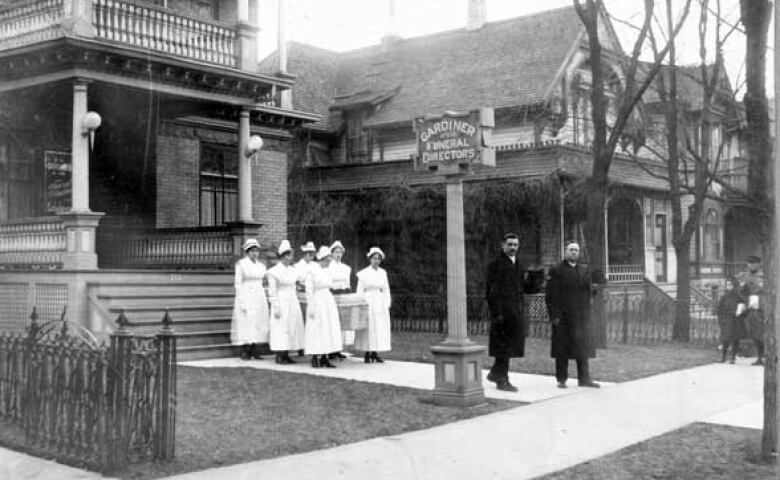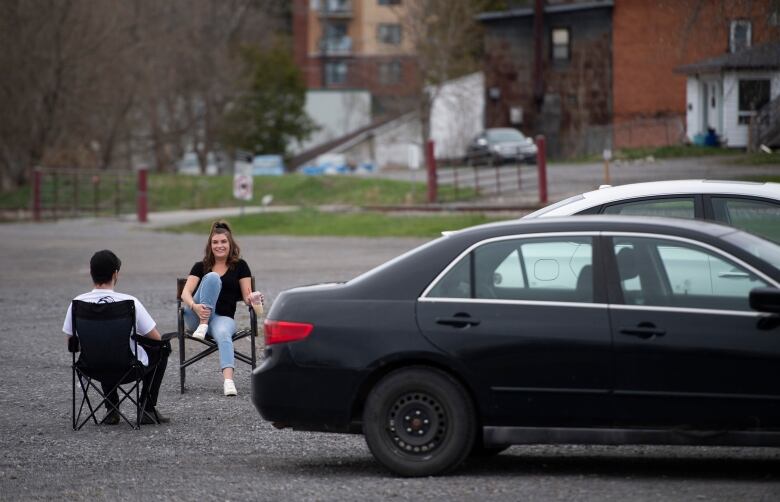Epidemiologists brace for 2nd wave of COVID-19 and it may come in September
Now's no time to become complacent about COVID-19, experts warn

It may seem like things are returning to normal as the unprecedented rules and restrictions that have governed our lives over the past two months are slowly being loosened.
This week, some retailers in Ontario reopened their doors. Golfers and tennis players hit the links and the courts.And even if you can't get a haircut yourself, your dog can now go in for a trim. In Quebec, police checkpoints have disappeared from bridgesand elementary students are back in school.
But epidemiologists are warning it's still too early to let our guard down as they look ahead to the inevitablesecond wave of COVID-19 and the surge of sickness and death it could bring.
"Until we get the vaccine, I don't think we can really avoid the second wave," saidRama Nair, an expert in epidemiology with 40 years' experience as a teacher and researcher at the University of Ottawa.
No herd immunity
Nair believes returning too quickly to our pre-COVID-19 lives, when we hugged friends andwent hours without washing our hands,could undo the gains we've made in containingthe novel coronavirus.
"It's not just going to disappear," Nair said. "We haven't reached anywhere near the herd immunity that we require to avoid a second wave."
It hasn't flattened because it's gone through our community, it's flattened because we've distanced. We've slowed it down.- Dr. Doug Manuel, The Ottawa Hospital
That absence of herd immunity when a sufficiently high proportion of the population is immune to a contagious disease, thus controlling its spreadis something Dr. Doug Manuel,a senior scientist at The Ottawa Hospital, likens to kindling.
Just as fire needs dry, quick-burning fuelto transforminto an inferno, a virus needs susceptible hosts.
For example, according to Manuel, about 99 per cent of Ottawa's population is likely still vulnerable to COVID-19. That means only about one per cent of the population has contracted the disease health officials have said confirmed cases likely represent only a fraction of the actual number something researchers regard as both a success and a dangerous vulnerability.
The curve of infections "hasn't flattened because it's gone through our community, it's flattened because we've distanced. We've slowed it down," Manuel said.
But as more and more of us fillsidewalks and parks to resume something resembling our normal lives, more of us will inevitably become infectedand more of us will spread the disease.
The key, Manuel said, is to keep that new spread under control.
"We have to be very careful. This is a tricky virus," he warned. "I think what distinguishes COVID is this high ability to spread before you even have symptoms."
Lessons from the Spanish flu
It was the second wave of the Spanish flu in the fall of 1918that tore through hospitals and killed people within hours of the first symptoms appearing.
Esyllt Jones, a University of Manitoba historian who has studiedthe Spanish flu, said while the illness was especially deadly and virulent, its spreadwas abetted by the slow reaction of public health officials at the time.

"The lessons of the [Spanish] flu pandemic are mostly lessons of what didn't work," she said.
A lack of government assistance a century ago meant sick people had little choice but to go to work. And while there were similar shutdownsgatherings at schools, churches and pubs were often verboten any notion of physical distancing only lasted a month or so, not nearly long enough to stamp out the virus.
The results were catastrophic.
"The fall wave really kind of went everywhere," Jones said.
It's believed the infection rate of the second wave of the Spanish flu was between four and five times greater than the first wave, which had mostly infected returning First World War soldiers, Jones said.
In the end, the Spanish flu killed about 50,000 Canadians at a time when the country had a population of about eightmillion.
It's facts like this that have prompted University of Ottawa mathematicianRobert Smith? (the question mark is part of his name) to cancelhis fall travel plans.

"There is potentially a tsunami happening," said the professor,whomodels infectious diseases. His estimates, like other epidemiological models, predictanother wave of COVID-19 bylate summer.
"Diseases like this do tend to come in waves, and often the second wave is much worse than the first one," he said.
'We might get lucky'
Second waves are also much more difficult to predict, Smith? said.
"We will start to build back society, there will be limited travel and then travel will increase, and then probably when we're not quite lookingat it, there will be another wave." He believes that will happen in September.
Manuel's own modellingalso shows a spike in hospitalizations in September in Ottawa if social contact rises by even 20 per cent between now and then.
Hospitalization projections at The Ottawa Hospital

Twenty per centmight not sound like muchbut it actually represents a dramatic shift from our current distancing habits, he said. If we keep up what we're doing now limiting our contact with others, wearing masks and washing our hands Manuel believes we can avoid a second wave altogether.
"It's absolutely not written in stone [that it will happen]. But it's up to us," he said.
Individual behaviour is hard to predict, plus Canadians have never been through a lockdown quite like this before.While it appearswe've beaten backthe first wave, there is the danger that it could breed false confidence.
"We just don't know how people are going to react," Manuelsaid."If we're coming into more contact with people who are infectious, it's just going to take off again."
Corrections
- An earlier version of this story said the second wave of the Spanish flu hit Canada in September 1919, when in fact it was September 1918.May 20, 2020 11:34 AM ET













_(720p).jpg)


 OFFICIAL HD MUSIC VIDEO.jpg)
.jpg)



























































































